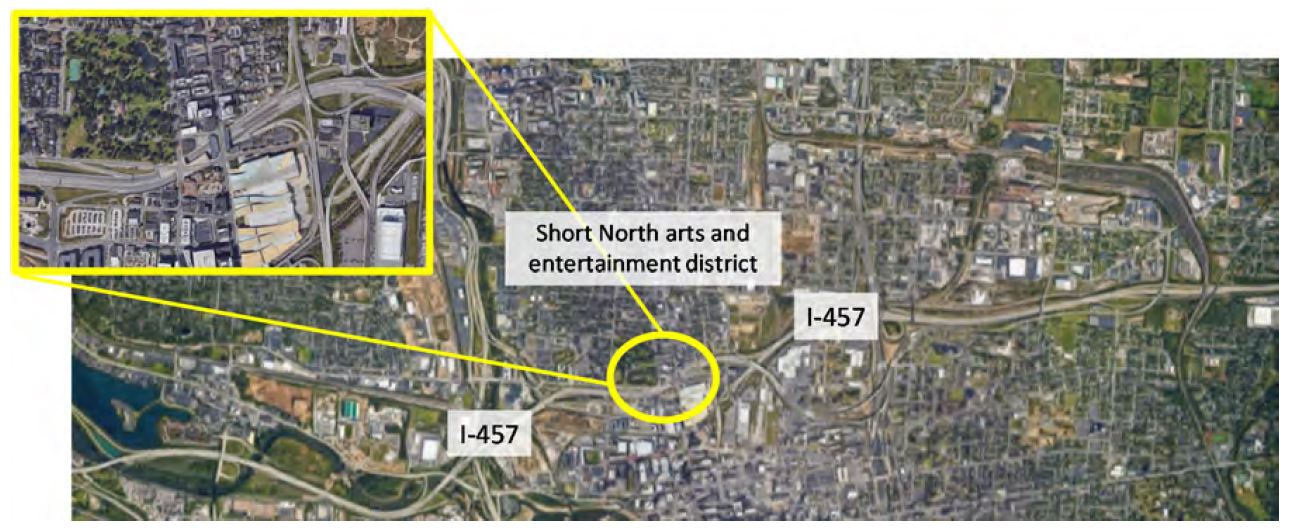The Rialto Bridge Project (the Project) began in 1995 when the City of Venice, Illinois (the City) was looking for a way to reconnect sections of downtown which had been bisected by the construction of Interstate 457 (I-457), an inner-belt highway, some twenty years earlier. The construction of the expressway in the late 1970s became a barrier to the development of the area north of I-457.
Because of this the arts and entertainment district to the north and community groups opposed the proposed further widening of the expressway claiming it would further damage the urban landscape. For example, with a large convention center located downtown near the interstate, "restaurateurs south of Interstate 457 said they enjoyed a steady stream of convention traffic, while those north of the highway largely reported no related business."
The location of the Project is shown in Figure 1 below. Before the contemplated an observer said "what separated the haves from the have-nots was a 200-foot-long, chain-link-fence-bordered walkway spanning a busy highway below. It was a pedestrian no-man's land."

Figure 1: Location of the Project
Source: Google Maps
View larger version of Figure 1.
To heal the scar created by the expressway, the solution would be to build some type of pedestrian friendly crossing over the expressway that would make the walk from the south the to the north feel enjoyable and safe, enhance the convention center district, bring the two parts of the City closer to each other, and gain community buy-in for the expressway widening. While other cities such as Seattle and Kansas City had erected convention centers over urban highways, the objective of the I-457 Rialto Bridge would be to create pedestrian and retail space, one of the first such speculative real estate projects of its kind.
Through the early deliberation process the City, key stakeholders and the community came to the consensus that the Project was to be composed of three separate bridges: one for through- traffic across the highway and one on either side for the retail structures.
The construction costs of the commercial buildings would be higher than those for surrounding projects built due to the costs of building a concrete slab across an operating highway.
Furthermore, planners and historians in the community requested that the buildings should evoke the architecture style of Union Station which was demolished in the 1970s to make way for the nearby convention center. This would also add to the commercial construction costs.
Finally the commercial buildings lacked good access to parking, a common requirement for most retail establishments, a potential impediment to attracting robust tenants.
Despite these impediments, a local developer, Veneto Real Estate Companies, approached the City and expressed interest in investing in the Project.
You are a group of public and private officials, professionals and citizens jointly appointed by the City of Venice and the Governor of Illinois. In the time available, they want you to prepare a plan to satisfy the City of Venice, IDOT, the business community, and the residents of City of Venice and realize the Rialto Bridge. You must recommend the following:
Please: